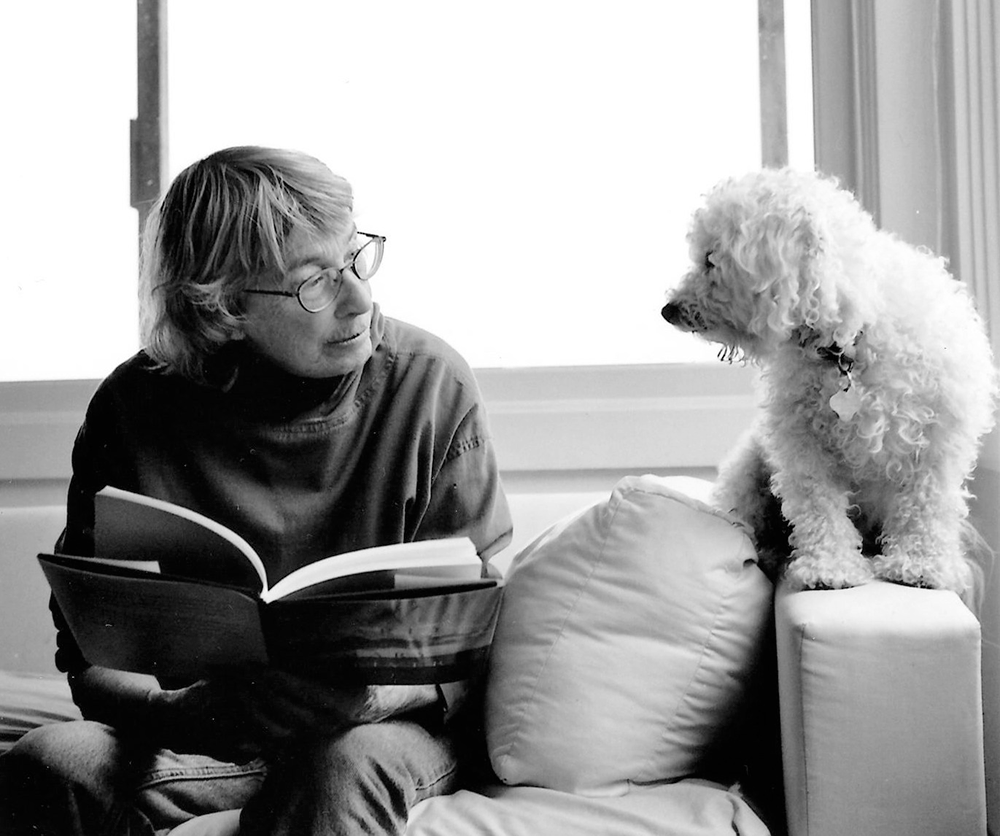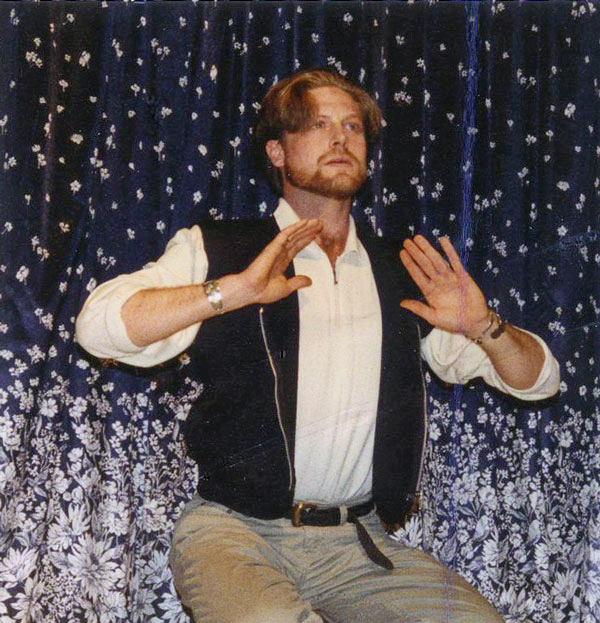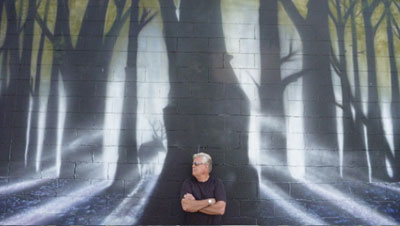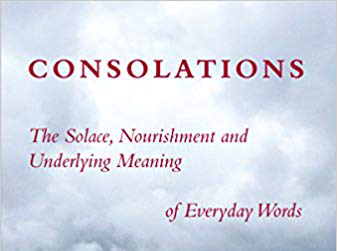How Emotions are Made
Wayne’s Zeitgeist series: How Emotions are Made: the secret life of the brain, by Lisa Feldman Barrett. A Monster Calls, movie. The Fourth Sign of the Zodiac, poetry by Mary Olliver. Scars to Your Beautiful, music by Alessia Cara.
Curated by Wayne Dodge. In the Zeitgeist series, Wayne wades through a world of publications, theories, music, poems and more, sharing his thoughts, discoveries and passions with particular reference to topics that touch The Haven.
Optimism is an alienated form of faith, pessimism an alienated form of despair. To have faith means to dare, to think the unthinkable, yet to act within the limits of the realistically possible. ~ Erich Fromm
Book
How Emotions Are Made: The Secret Life of the Brain
By Lisa Feldman Barrett. Houghton Mifflin Harcourt, 2017
This is a very important book that has also been getting widespread press attention as well. Professor Barrett is a researcher in the area of emotions, with a background in clinical psychology.
What she challenges here is the classic view of emotions – which is that our emotions are built in templates that fire off. The older concepts of particular emotional circuits in the limbic system of the brain, that anger is a built-in defense mechanism of the reptilian fight/flight/freeze pathways do not appear to hold up to newer understandings of neuroscience.
This also means that beliefs about the universality of expression of emotions – which harkens back to Darwin’s book, The Expression of the Emotions in Man and Animals (1872) – and popularized by the psychologist Paul Ekman (a favorite of Gwen and myself – and the basis of the TV series, Lie to Me) are also not true.
Instead, our emotions are being constantly constructed by our brains – using current body inputs, past experiences and our cognitive construction of the world. She clearly acknowledges that it doesn’t feel that way as emotions happen – and she supports her thesis both with reference to the literature as well as clear explanations.
And this does not include just our emotions, but our experiences as well. In the apt description by Gerard M. Edelman – our current experiences are “the remembered present.” What we experience in the moment is filtered through both our past experiences and the expectations (predictions) that we make about what is happening now.
What is hard wired in the human is that we will make such constructions – but the construction (e.g., anger, happiness) itself not a specific circuit in the brain. Nor do we construct our emotional concepts on our own – we do so embedded in our culture/society/tribe.
So it is interesting that the emotional granularity varies from culture to culture. Russian has two distinct concepts for anger; German has three and Mandarin has five. Barrett makes the point that these different nuances actually change the experience – just as Russians have a different experience seeing a rainbow (which for them has 6 distinct bands of colors) than do those from languages that only recognize 5 distinct colors (and, of course, the rainbow actually has no distinct color – just a constant gradation of color).
And, there are the emotions that are unique to specific cultures – such as Forelsket (Norwegian concept for an intense joy of falling in love) or Gigil (Filipino concept for the urge to hug or squeeze something that is unbearably adorable) or Age-otori (Japanese concept for the feeling of looking worse after a haircut). Barrett make the point that these are just as real an emotion as anger or sadness.
We create our constructions in community and communication with others – thus the strong effect that others have on our current experience.
Barrett explores the implications of this constructive theory in chapters on Mastering Your Emotions, Emotion and Illness, Emotion and the Law – and has a concluding chapter on how the brain, using constructions, creates the mind as well.
Your personal experience, therefore, is actively constructed by your actions. You tweak the world, and the world tweaks you back. You are, in a very real sense, an architect of your environment as well as your experience. Your movements, and other people’s movements in turn, influence your own incoming sensory input. These incoming sensations, like any experience, can rewire your brain. So you’re not only an architect of your experience, you’re also an electrician. (Pg 285.)
Although this book challenges ideas such as the universality of anger and the limbic system as the emotional circuit in the brain’ I was happy to see that it jives so well with fundamental precepts of The Haven (self-responsibility; the core importance of curiosity; the openness to change).
And, once again, I’m impressed with how foresightful Ben and Jock were in the construction of The Haven concepts.
Movie
A Monster Calls, 2017
This is a wonderfully crafted movie (with Sigourney Weaver, Felicity Jones and Liam Neeson) about the complexities and ambivalences of grief and loss as seen through the eyes (and experience) of a young boy. This is not just a Hallmark movie about loss, but treats the range of reactions and responses to illness and death with honesty and understanding. In the style of Magic Realism, crafted by a Spanish director and multinational crew, for me it was both transporting and transformational.
Poetry

“Do you need a prod? Do you need a little darkness to get you going?”
The Fourth Sign of the Zodiac (Part 3)
by Mary Oliver
I know, you never intended to be in this world.
But you’re in it all the same.
So why not get started immediately.
I mean, belonging to it.
There is so much to admire, to weep over.
And to write music or poems about.
Bless the feet that take you to and fro.
Bless the eyes and the listening ears.
Bless the tongue, the marvel of taste.
Bless touching.
You could live a hundred years, it’s happened.
Or not.
I am speaking from the fortunate platform
of many years,
none of which, I think, I ever wasted.
Do you need a prod?
Do you need a little darkness to get you going?
Let me be as urgent as a knife, then,
and remind you of Keats,
so single of purpose and thinking, for a while,
he had a lifetime.
Listen to Mary Oliver read The Fourth Sign of the Zodiac via On Being Studios on SoundCloud.
I’m assuming that Mary Oliver is well-known to you. If not, read anything you can lay your hands on. Mary Oliver has received the National Book Award and the Pulitzer Prize for Poetry. She has published over 25 books of poetry and prose including Dream Work, A Thousand Mornings, and A Poetry Handbook, and Felicity.
Music
I had some difficulty seeing this as a workshop song – and it’s not quite a full dance tune – but, boy-oh-boy, what a voice and what a message.
Or listen to audio on SoundCloud.
Scars To Your Beautiful
by Alessia Cara
She just wants to be beautiful
She goes unnoticed, she knows no limits
She craves attention, she praises an image
She prays to be sculpted by the sculptor
Oh, she don’t see the light that’s shining
Deeper than the eyes can find it
Maybe we have made her blind
So she tries to cover up her pain
And cut her woes away
‘Cause covergirls don’t cry
After their face is made
But there’s a hope that’s waiting for you in the dark
You should know you’re beautiful just the way you are
And you don’t have to change a thing
The world could change its heart
No scars to your beautiful
We’re stars and we’re beautiful
Oh-oh, oh-oh-oh, oh-oh-oh-oh, oh-oh-oh
And you don’t have to change a thing
The world could change its heart
No scars to your beautiful
We’re stars and we’re beautiful
She has dreams to be an envy, so she’s starving
You know, “Covergirls eat nothing.”
She says, “Beauty is pain and there’s beauty in everything.”
“What’s a little bit of hunger?”
“I can go a little while longer,” she fades away
She don’t see her perfect
She don’t understand she’s worth it
Or that beauty goes deeper than the surface
Ah, oh, ah, ah oh
So to all the girls that’s hurting
Let me be your mirror
Help you see a little bit clearer
The light that shines within
There’s a hope that’s waiting for you in the dark
You should know you’re beautiful just the way you are
And you don’t have to change a thing
The world could change its heart
No scars to your beautiful
We’re stars and we’re beautiful
Oh-oh-oh, oh-oh-oh-oh, oh-oh-oh, oh-oh-oh-oh
And you don’t have to change a thing
The world could change its heart
No scars to your beautiful
We’re stars and we’re beautiful
No better you than the you that you are
(No better you than the you that you are)
No better life than the life we’re living
(No better life than the life we’re living)
No better time for your shine, you’re a star
(No better time for your shine, you’re a star)
Oh, you’re beautiful, oh, you’re beautiful
There’s a hope that’s waiting for you in the dark
You should know you’re beautiful just the way you are
And you don’t have to change a thing
The world could change its heart
No scars to your beautiful
We’re stars and we’re beautiful
Whoa-oh-oh-oh, whoa-oh-oh-oh, whoa-oh-oh-oh-oh, oh-oh-oh-oh
And you don’t have to change a thing
The world could change its heart
No scars to your beautiful
We’re stars and we’re beautiful






